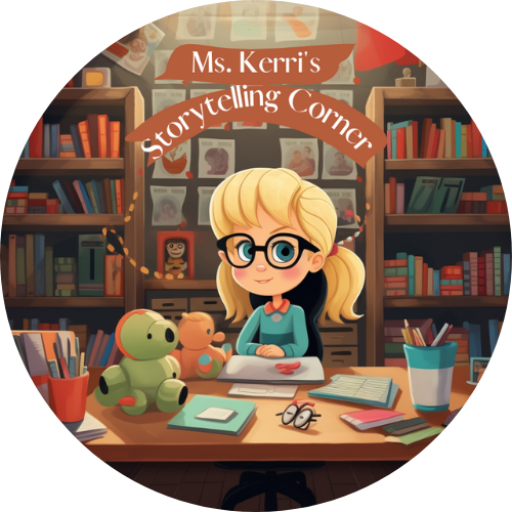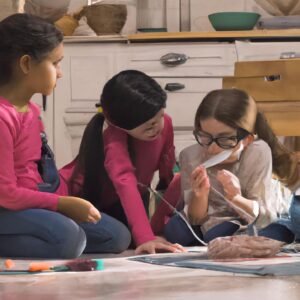Musings of Moral Marvels: Unveiling the Exquisite Tapestry of Life Lessons in Children’s Literature
Introduction
Children’s books hold a special place in our hearts. They have the remarkable ability to transport us to magical worlds, ignite our imaginations, and entertain us with captivating stories.
Yet, beyond their enchanting tales, children’s books serve a much greater purpose — teaching life lessons and imparting morals that shape young minds. In today’s fast-paced world, where technology often dominates our attention, it becomes even more important to recognize the value of these timeless literary treasures.
The Importance of Teaching Life Lessons and Morals through Children’s Books
Children are like sponges; they absorb knowledge and experiences with incredible ease. Harnessing this natural inclination for learning by utilizing children’s books as educational tools is an opportunity that should not be overlooked. These books provide a unique platform for introducing complex concepts in a simple and relatable manner.
By immersing children in stories that explore themes such as kindness, empathy, perseverance, courage, and friendship— among others— they are exposed to valuable life lessons that will undoubtedly shape their character development. The power of storytelling lies in its ability to engage children emotionally while teaching them fundamental values and guiding principles.

The Benefits of Using Children’s Books as Educational Tools
There are numerous benefits to incorporating children’s books into educational curricula or simply reading them at home with your little ones. Firstly, these books foster language development by exposing children to rich vocabulary and encouraging them to explore new words within a meaningful context.
Beyond language skills, children’s books also stimulate imagination and creativity. Through vibrant illustrations or vivid descriptions of characters and settings, young readers are transported into imaginative worlds where anything is possible.
Moreover, by navigating the moral challenges presented within these stories’ narratives, children develop critical thinking skills while learning to analyze and make decisions based on the characters’ actions and their consequences. This process of moral reasoning nurtures empathy and helps children understand the complexities of human emotions.
Children’s books also serve as a source of comfort, fostering a sense of security, especially during times of uncertainty or change. These stories allow children to explore their own emotions, fears, and dreams in a safe and supportive environment.
The importance of teaching life lessons and morals through children’s books cannot be overstated. By using these literary gems as educational tools, we not only provide young readers with valuable knowledge but also equip them with the emotional intelligence needed to navigate the complexities of life.
The benefits are manifold: language development, stimulation of imagination and creativity, critical thinking enhancement, empathy cultivation, and emotional support. So let us embark on an exciting journey through the best children’s books that beautifully weave life lessons into their enchanting narratives.
Looking for read aloud books about friendship? Click HERE.

Classic Tales that have Stood the Test of Time
The Little Prince by Antoine de Saint-Exupéry – Teaching Friendship, Love, and Seeing Beyond Appearances
“The Little Prince” is a timeless masterpiece that enchants readers of all ages. This poignant tale follows the journey of a young prince who befriends a stranded pilot in the desert.
Through their encounters with various characters on different planets, the story imparts profound life lessons. One of the primary themes explored is friendship, as the little prince learns to value authentic connections over superficial interactions.
Moreover, the book beautifully captures the essence of love in its purest form – unconditional and selfless. It reminds readers about cherishing relationships and nurturing them with care and empathy.
Another significant lesson from “The Little Prince” lies in its exploration of seeing beyond appearances. It encourages readers to look deeper into people’s hearts and minds rather than making judgments based solely on external appearances.
Charlotte’s Web by E.B. White – Imparting Lessons on Compassion, Loyalty, and the Circle of Life
E.B. White’s beloved classic “Charlotte’s Web” weaves a heartwarming tale about friendship, bravery, and acceptance. At its core lies an extraordinary bond between Wilbur, a naive pig destined for slaughter, and Charlotte, a wise spider living in his barn.
Through Charlotte’s ingenious web-writing skills, she saves Wilbur from his grim fate while teaching him invaluable life lessons along the way. The book emphasizes compassion towards all creatures big or small and beautifully portrays loyalty through Charlotte’s unwavering dedication to safeguarding her friend’s life until her last breath.
Additionally, “Charlotte’s Web” delves into the circle of life as it explores themes of birth, death, growth, and renewal—helping young readers understand these natural aspects with tenderness and empathy. Through its beautifully crafted storytelling, this timeless classic invites readers to reflect on the interconnectedness of all living beings and the importance of compassion in our interactions with them.
These two classic tales continue to captivate generations with their profound messages, enchanting storytelling, and enduring life lessons. They have become essential cornerstones in teaching children about friendship, love, compassion, loyalty, empathy, and the deeper meaning found beyond appearances.

Kindness and EmpathyOpening Hearts and Embracing Differences
When it comes to teaching children about kindness and empathy, two remarkable books gracefully stand out. Firstly, we have “Wonder” by R.J. Palacio.
This heartwarming story follows the journey of Auggie Pullman, a young boy with a facial difference, as he enters school for the first time. Through Auggie’s inspiring narrative, readers are encouraged to embrace differences, practice acceptance, and show empathy towards others.
Palacio reminds us that kindness has the power to change lives in profound ways.
Secondly, “Each Kindness” by Jacqueline Woodson explores the significance of small acts of kindness and their lasting impact. The story revolves around Chloe, who misses the opportunity to be kind to a new girl at school named Maya.
As Chloe watches Maya’s loneliness grow and realizes her mistake too late, readers learn about the importance of inclusivity and how every act of kindness matters. Woodson beautifully captures the essence of regret while gently teaching children that even small gestures can make a significant difference in someone’s life.
Perseverance and ResilienceNavigating Challenges & Embracing Possibilities
In times when resilience is key in overcoming obstacles, two enchanting books provide valuable lessons on perseverance. Dr.Seuss’ classic “Oh, the Places You’ll Go!” takes readers on an adventurous journey filled with ups and downs.
Through whimsical rhymes and colorful illustrations, this book instills determination within children as they witness the protagonist navigate through challenges with unwavering resilience.
On another note, “The Dot” by Peter H.Reynolds emphasizes creativity as a gateway to building self-confidence and resilience in pursuing dreams. The story revolves around Vashti, a young girl who believes she cannot draw.
However, her art teacher encourages her to make her mark with a simple dot. As Vashti’s confidence grows, she begins to explore the endless possibilities of her creativity, leading readers to understand the importance of taking risks and embracing self-discovery.
Courage and BraverySmall Acts and Unyielding Determination
Within the realms of courage and bravery, two captivating books serve as beacons of inspiration for young readers. “The Lion & The Mouse,” retold by Jerry Pinkney, tells a timeless tale showcasing how even small acts can create a profound impact. Through stunning illustrations and poetic storytelling, this book teaches children about bravery, gratitude, and compassion. It emphasizes that acts of kindness can create powerful ripples of change.
Another remarkable book that explores courage is “Brave Irene” written and illustrated by William Steig. The story revolves around Irene, a young girl who braves a fierce snowstorm to deliver an important dress for the duchess’s ball.
Through Irene’s unwavering determination in the face of adversity, readers learn about perseverance and resilience in pursuit of one’s goals. Steig beautifully weaves together themes of courage, dedication, and resilience to inspire children to never give up on their dreams.
By delving into these niche subtopics within children’s literature—kindness and empathy; perseverance and resilience; courage and bravery—parents, educators, and young readers alike can discover invaluable life lessons tucked away in these remarkable books. Each tale holds the power to shape young minds while fostering essential qualities that will guide them as they navigate the challenges life presents them with.
Rarely Known Small Details: Hidden Gems

Astonishing Insights into Lesser-Known Children’s Books that Pack a Powerful Punch
While the classics and well-known titles dominate the realm of children’s books, there are numerous hidden gems that often go unnoticed. These lesser-known works possess profound lessons and morals that can shape young minds in remarkable ways. Let us explore two remarkable examples that deserve more recognition:
The Miraculous Journey of Edward Tulane by Kate DiCamillo
In this enchanting tale, we meet Edward Tulane, a china rabbit with impeccable craftsmanship but a heart as cold as porcelain. Through a series of unexpected events, Edward embarks on an extraordinary journey where he learns valuable lessons about love, loss, and the power of empathy. DiCamillo’s poignant storytelling delves deep into themes of vulnerability and emotional growth, teaching children the importance of compassion and connection in an increasingly disconnected world.
The Invisible Boy by Trudy Ludwig
Trudy Ludwig’s The Invisible Boy tackles the sensitive topic of social isolation and empowers children to embrace inclusivity. The story follows Brian, a quiet boy who often goes unnoticed by his classmates. With vivid illustrations by Patrice Barton, Ludwig beautifully captures Brian’s loneliness and eventual transformation when a new student named Justin arrives at school.
By highlighting small acts of kindness and friendship, The Invisible Boy teaches young readers about empathy, accepting others’ differences, and fostering an inclusive environment.
Conclusion
The world of children’s literature is rich with stories that not only entertain but also impart valuable life lessons and morals to young readers. From timeless classics to hidden gems waiting to be discovered, these books have the power to shape young minds for years to come.
Through tales of kindness, perseverance, courage, and more, children learn essential values that will guide them as they navigate the complexities of life. As parents, educators, or simply lovers of literature, let us continue to explore the vast landscape of children’s books and share these treasures with the next generation.
By nurturing a love for reading and instilling moral lessons through these stories, we can foster empathy, resilience, and compassion in young hearts. May the power of storytelling continue to inspire and bring joy to children everywhere.

Ms. Kerri’s Corner provides a exciting virtual space for preschool learning. Through a variety of engaging activities, she exposes young minds to early math, literacy, science and social-emotional skills in a developmentally appropriate way. Centers for blocks, art, books and music allow children to explore hands-on learning at their own pace. Guided lessons subtly introduce number sense, letter sounds and narrative thinking. Careful observation gives insight into each child’s progress across domains. Viewers are also invited to participate, reinforcing that their ideas are valued. By making learning fun yet purposeful, Ms. Kerri lays the groundwork for future academic success while fostering creativity and imagination. Her program offers preschoolers valuable screen-based learning experiences.




